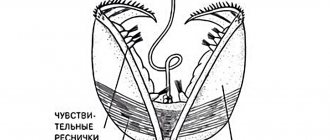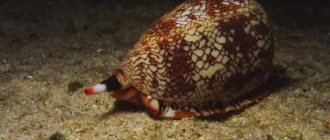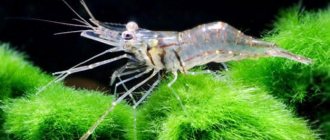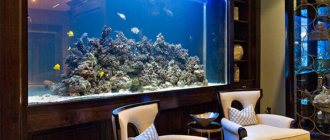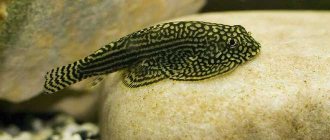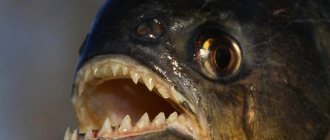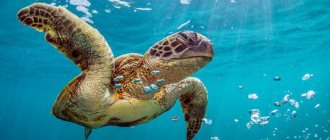The second largest group of mollusks in terms of number of species are bivalves.
About 20 thousand of their species are found in nature. Each of them has its own special characteristics and structure. But they are all characterized by low mobility. Have you tried shellfish?
- Yes 58%, 301 votes
301 votes 58%301 votes - 58% of all votes
- No 42%, 214 votes
214 votes 42%
214 votes - 42% of all votes
Total votes: 515
03.10.2019
- Yes 58%, 301 votes
301 votes 58%301 votes - 58% of all votes
- No 42%, 214 votes
214 votes 42%
214 votes - 42% of all votes
Total votes: 515
03.10.2019
×
You or from your IP have already voted.
Description and features
Bivalve mollusks their name in honor of their build. These aquatic inhabitants were nicknamed that way back in the 18th century. All from the light hand of the Swedish naturalist Carl Linnaeus. But there are also alternative options. For example, “headless”, which also reflects the appearance features of these sedentary creatures. These individuals can be found both on the seabed and in fresh water bodies.
As a rule, the body of bivalves is symmetrical, slightly flattened. But there are also individuals that resemble a ball, as well as worms. Looking at them, you can understand that you see neither the head nor the fins, only the body and the leg, which is located in front.
The latter serves as a motor for them to move slowly along the bottom. First, a limb protrudes from the shell, clings to the ground, and then pulls the shell toward itself. Thanks to this part of the body, the mollusk can bury itself in the sand.
And all this is placed in a lime shell, which consists of two plates that interlock with each other. The size of these doors can vary from a couple of millimeters to one and a half meters. They can be equal in size or different in size.
On the inside, they usually have a very beautiful pearl color, because they are often covered with a pearlescent coating. The older the aquatic creature, the thicker this layer. When a speck gets inside the shell, mother-of-pearl envelops it, and the result is a pearl so beloved by many.
The outside is not so attractive - the stratum corneum is most often brownish and loose. It forms the connective tissue that connects the “doors” of the shell. They grow together at the back and sides. However, not completely, leaving a hole for the leg. In order for the clam's house to close, it needs to use a special device. closing muscles.
A tight connection is also ensured by the teeth that run along the edges of the valves. In addition, thanks to this device, the doors will not fidget and are clearly fixed. However, not all representatives that are included in the class bivalve molluscs .
The mollusk breathes using ctenidia (or gills). They also filter water. If a bivalve lands on the shore, then by slightly opening the shell, it can perform gas exchange. But not all, some species of bivalves close their shells tightly, and are able to survive in this state for even an hour.
The mollusk grows like this: along the edge of the shell, due to special secretions, one stripe is added per year. This means that the age of the creature is not difficult to determine. The body increases due to the accumulation of the mineral base. They are real long-livers, their age reaches five hundred years.
Human use
Since ancient times, many varieties of bivalves have been used by humans for various purposes.
- Their meat is considered a delicacy; it has excellent taste, is healthy and is easily digested by the body. It contains large quantities of vitamins A, B, C, D. Bivalve meat is rich in iron, iodine, copper, zinc and other minerals.
- In many countries, over the past few decades, mollusks have begun to be relocated to new territories, assisting in acclimatization. Artificial breeding is also practiced in the seas, freshwater and artificially created reservoirs. Also, for breeding bivalves, shallows and small bays are used, which are specially prepared for this purpose and protected from predatory inhabitants.
- Bivalve ones have found use in the form of popular souvenirs and decorations. Pearls are used in jewelry production, and inexpensive jewelry and buttons are made from mother-of-pearl extracted from shells.
- Shells are often used as a decorative element, pressed into plates that are used to decorate walls, paths in gardens and photo frames.
- Shellfish inhabiting polluted water bodies are capable of accumulating pollutants of organic origin and heavy metals. Therefore, they are used as a biological indicator of environmental pollution.
- Often, bivalves are used by humans to purify water.
- Some species of mollusks produce byssus, which is used in the textile industry. It is one of the components for the production of fine linen, an expensive type of fabric.
- Bivalves are considered the most valuable and popular food for fish, so reservoirs in which mollusks are found are used as places for fattening commercial fish species.
- A food supplement made from crushed shells is used to feed poultry.
- In agriculture in a number of countries, their shells are used in the production of lime.
Best articles: Characteristics, role and structure of the cell nucleus
Structure
- Appearance
Let's look at the structure of bivalves . The folds of skin around the perimeter of the shell are called the mantle. If an aquatic inhabitant has the habit of burying itself in sand, then this organ forms two tubes - the inlet and outlet channels.
Then all interaction with the environment occurs through them. According to the first, oxygen and food enter the body, according to the second, waste residues are removed. The mantle cavity also includes the leg, horny openings and respiratory organs.
Respiratory and nervous systems of bivalves : these creatures are capable of touch with the help of tentacles. They grow on the edge of the mantle. Through the latter, mollusks that do not have gills are able to receive oxygen. The gills, in the form of two petals, are located on either side of the leg.
By the way, not everyone has it; if a bivalve leads a sedentary lifestyle, it does not need motor power (oysters, for example). And if the mollusk’s goal is to attach to a specific object for a long time, then a special gland located in the leg secretes a special one. threads with which the shell of a bivalve mollusk is securely attached to where it needs to be.
As for eyes, most of the species on our list do not have them. But, nevertheless, there are some representatives endowed with visual organs. It’s true that light-sensitive cells, which we all have, help mollusks navigate where there is light and where there is darkness.
- Internal structure
Soft-bodied animals have no bones. Note that the circulatory system of bivalve mollusks is open, blood flows not only in the vessels, but also washes the organs of bivalve mollusks . A gut runs through the heart of these creatures. A pair of kidneys allows them to remove metabolic products. Animals perceive odors poorly; their olfactory organs are underdeveloped. There are male and female individuals. However, cases of sex change mid-life cycle have been recorded.
Varieties of superorders
The protobranchial superorder includes primitive individuals with a simple gill structure. The flaps have a multi-toothed lock; the number of protrusions increases as the shell grows. The wedge-shaped leg has a sole, and there is no byssal gland. They live in the seas in the north, most representatives feed on soil, while the mouth blades are distinguished by their elongated shape. This group includes small species of bivalves.
There are 2 types:
- pleural;
- cerebral.
The gill superorder is the most numerous with modified respiratory organs containing thread-like lobes with upward and downward movement of the flow. There are morphological traverses between the filamentous gills and those collected in plates. In this subclass, breathing holes are additionally used to filter water and fish out food. Some individuals have a leg, while others have died and do not grow back.
The superorder Cloisonnidae contains small mollusks of the deep sea. In this species, parts of the mantle cavity function, which are epibranchial septa. The shell of the representatives is distinguished by its elongation at the back and the absence of a lock on the valves. There is a groove on the leg. Individuals of this order are predators.
Reproduction
In some cases, fertilization occurs as follows: male reproductive cells emerge through the exit channel of one individual, after which they enter the mantle of the female individual along with water. This is where offspring are born. After some time, the larvae rush out.
But most often, the process of the birth of a new life occurs right in the water, females and males release their reproductive cells outside, they meet and dozens of new mollusks are born. Puberty can occur in the first year of life. In other species, not before the mollusk celebrates its first anniversary of 10 years.
Biological role
Shellfish are a biological filter, helping to purify water, and a link in the food chain - fish and mammals feed on them.
Shellfish are also important in human life:
- are a source of mother-of-pearl and pearls used in the jewelry industry;
- contain nutritious animal protein for human consumption.
The best varieties of mother of pearl are obtained from the thick walls of the pearl oyster. Special shellfish farms are created for restaurants, where mussels and oysters are grown.
Pearl barley, which lives in fresh water bodies, grows very slowly and can live up to 15 years. Age is determined by the number of extensive rings on the shell - one ring is equal to one year of life. Previously, painters used pearl bark flaps to mix paint.
Nutrition
If we consider the nutrition of bivalves , then we need to understand that this process occurs according to the filter principle. The food, which consists of algae, plants, and protozoa, is processed by the digestive system of bivalve mollusks.
Through the inlet siphon, organic matter enters the sink along with water. Further special. “hairs” filter food and send it to the mouth. After which, through the pharynx, all this enters the esophagus, reaches the stomach, and, having been in the intestines, is removed through the anus.
Then all that’s left to do is remove the waste through the outlet siphon. However, there are also predators among them. With the help of their muscles, they send small crustaceans and other prey into the entrance tube, and then into the mouth.
Gastropods
- About 90 thousand species are known;
- They live on land, in marine and fresh water bodies (seas, oceans, rivers, lakes, ponds);
- The body is covered with a shell twisted into a spiral (turbospiral structure);
- Under the shell there is a mantle (a special fold of skin);
- The shell is connected to the body with the help of a powerful muscle;
- The leg occupies the entire ventral surface of the body;
- They are hermaphrodites and dioecious animals;
- Representatives: common pond snail, garden snail, grape snail, pea snail, ball snail, lawn snail, reel, slug, rapana, trumpeter, etc.
Kinds
This huge class is made up of tens of thousands of species. To be more precise, there are about 20,000 of them. About a thousand variations of these creatures live in Russia.
- Tridacna gianta
Can be found in the Indian and Pacific oceans. They are found both in deep and shallow waters. This clam is really huge. It is the largest in its class. The weight of the invertebrate reaches a quarter of a ton. However, a specimen with a record weight of 340 kilograms was recorded.
Measurements of the length of the shell also show impressive results - about one and a half meters. it increases by about eight centimeters per year. In addition, this aquatic inhabitant lives no less - about a hundred years. Tridacna is also unique in that it spends its life lying on its back.
Those. the dorsal valve of the shell is usually at the bottom. Hence the significant internal transformations. The closing muscles were located at the abdominal edge. And the byssus (threads for attaching to the surface), on the contrary, moved to the back. Another favorite position of the mollusk is with the valves facing up.
The tails of his mantle are very long and form a wavy “skirt”; it is most often blue, brown, yellow, or green. And the mantle is fused almost along the entire perimeter. As for the color of the shell, it is quite unremarkable, gray-green. Food is obtained by filtration. But he does not disdain the algae that live in his own mantle.
The mollusk has no gender; it has both feminine and masculine principles. As a result of fertilization, larvae are born, which travel for a couple of weeks, after which they find a cozy place and stay there for a long time. At first they are attached with byssal threads, and with age their own weight serves as a weighting agent.
Tridacna is eaten by people; in addition, pearls are formed in it, but not so valuable. The mollusk has become less common due to commercial production. The shells are used as souvenirs.
- Pearl mussel (Pearl mussel family)
Only one species of the family lives in Russia - the common pearl mussel. The valves of its shell are quite thick, convex, and dark brownish in color. The shape is oval. Inside there is a rather impressive pearlescent layer, white or pinkish.
The sizes are not small - up to 15-16 centimeters long. Found in running fresh water. It cannot tolerate sewage, so there are fewer and fewer of them. They live for about five decades. They don’t change the place they live; it’s either sand or an area between stones. Bisexual. They breed in summer. The young grow inside the females. After which, once released, it becomes a parasite of some fish; this period lasts about two months.
To grow pearls, a mollusk needs a small foreign object, it could be a speck, or a grain of sand, or even a living organism. When it gets inside the shell, it begins to become covered with layers of mother-of-pearl. It takes about forty years for a pearl to reach a size of 8 mm. Several pearlescent balls can grow in one individual.
Their numbers are declining sharply; in just fifty years the population has halved. However, the most valuable pearls come from sea pearl oysters. It is cleaner and larger in size. They prefer not to descend to great depths. They are all found in the same Pacific and Indian oceans. “Nest” in groups.
- Oyster
They live mainly in the seas. They prefer places that are warmer and, importantly, cleaner. After all, the oyster valves are always open. Their “house” cannot be called symmetrical. The shape depends on the habitat and can be completely different.
One cover is curved and wavy. It is this valve that serves as the basis, which grows to one place for life. They do not have entry or exit channels, because the mantle is of an open type. The closures are very powerful, as are the gills.
By the way, their leg was reduced (only young animals have it, which uses it until they choose a place to settle). The dimensions are not large - about ten centimeters. But they can reach forty. Various living creatures, such as worms, often take root on the valves. They are divided into male and female. Life begins in the female's shell. They reproduce well, but they take a very long time to grow.
These individuals rarely live alone. They prefer big company. The places where they accumulate are called oyster banks. Their favorite places are with a rocky bottom and rocks away from the shore; they often choose their older brothers as a base and attach to their shell.
There is also a second type of oysters - they set up coastal plantations. Such “associations”, as a rule, are mothballed in winter, i.e. stop their life activities. But as soon as it gets warmer, they thaw out and live life to the fullest again.
There are as many as five dozen varieties of these mollusks. The color of their shells ranges from pink and yellow to purple. But inside you will not find pearlescent shimmers, only a matte limestone coating.
They are valued primarily as a delicacy. Entire plantations are grown all over the world. The taste of this delicacy is influenced by the water they grew in (how salty, the more salt, the tougher the meat). For this reason, artificially grown individuals can keep clean water for some time.
These invertebrates are not afraid of low tides; they can easily live without water for two whole weeks. Oysters have natural enemies. These are predatory mollusks that make a hole in their shell, paralyze the prey and eat it.
An oyster can change sex during its life, and do this several times. Usually at the beginning of their journey they are males, after the first fertilization they smoothly transform into females.
- Scallop
The regular shape of the scallop shell is ribbed and looks like a fan. The valves of those that prefer shallow water are thick and large. They are very beautifully colored in different shades of red and white. For those that live at great depths, the “house” is very fragile. Often it even shines through. These are found at a depth of even 9 thousand meters.
The mantle becomes thicker closer to the edge. This creature has several eyes on it at once (there may even be a hundred of them); in the twilight they are able to glow. Small balls sit on the stems. This cannot be called full vision, but the mollusk can quite distinguish outlines and shadows. Another organ located nearby is the tentacles. With their help, the comb can be touched.
Not only a strong limb, but also shell valves help the elasmobranch to overcome considerable distances. The comb slams them and “jumps” to the desired point. The muscles of the headless are very powerful. So in one such leap, a sea creature can cover half a meter.
Without sinking to the bottom, a scallop can swim as much as 4 meters. Another method of movement, which is available to few mollusks, is jumping using a sharp retraction of the mantle edge into the shell. The scallop uses this option when it senses danger. His number one enemy is the starfish.
The mollusk can stick to the substrate and simply remain at the bottom of the sea. If a young individual has chosen a place for itself, it first feels it with its mantle tentacles, then its leg comes into play, which also conducts a kind of reconnaissance.
After which the limb is reabsorbed and releases threads. Over time, they become stronger and fix the comb in the chosen place. If he needs to escape from enemies, he is able to tear off the mount and move on. If nothing bothers the mollusk and its shell is slightly buried in the sand, it can lie motionless for up to two weeks.
They are divided into males and females. Male and female cells are found in water. The creatures are very fertile, the female spews about 25 million eggs. This is because only a few will survive. Sea creatures are considered sexually mature at 1 year of age, and at 2 years of age they are already harvested for human consumption.
They feed on plankton, sifting it from the water. This family is large, with more than two hundred variations. But if we talk about commercial ones, here are the most common ones:
- Icelandic scallop (weighs approximately 200 grams, length - 10 centimeters. Settles in colonies on rocks, prefers northern cold seas)
— coastal (this one is twice as large as the previous one, the color is most often light, habitat is Sakhalin and Kamchatka)
- Black Sea (has a small and bright shell)
When it gets cool, the mollusks easily migrate to a more suitable environment.
- Mussel
These invertebrates can be found all over the globe; edible ones live in the waters of the Baltic Sea and on the Atlantic coast. They prefer cool water. They settle near the shore, and also where the currents are strong enough. They live in huge groups, i.e. in jars like oysters. The record is a cluster 20 meters high. They are not particularly picky about the quality of water; dirt does not bother them, nor does a decrease in salt level.
The shell and body of the mussel are oval. The doors are wider at the rear edge and narrower at the front. The coloring of this inhabitant of the seas is dark, closer to black, but the inside of the shell, like most bivalves, has a mother-of-pearl coating. Mussels can produce pearls. Only marine headless ones have a byssus; river ones do not have it. The oral cavity of the mollusk is located right next to the leg.
Mussel eggs are stored near the gills; about 15 million eggs are released in one litter. They breed in the summer months. Baby invertebrates do not immediately acquire a shell. At first, the small mollusk moves freely in the water column. But when the valves begin to grow and become heavy for him, and this happens after about 10 days, the mussel settles.
They do not like great depths - a maximum of 30 meters. The mollusk is a desirable lunch not only for people, but also for fish, mammals and birds. In addition, it is hunted by stingrays and crabs. There have been cases when a person came across a poisonous mussel.
The thing is that the invertebrate eats poisonous algae. Accordingly, shellfish meat, accumulating toxic substances, becomes dangerous for us. As a filter, they are quite effective and can process approximately fifty liters of water per day.
- Toothless
Outwardly similar to a mussel, but has a more rounded shape, as well as a lighter “house” (brown, yellow). It got its name due to the absence of locking protrusions - teeth. Lives in fresh water bodies of Europe, America, and is also found in Asia. There wouldn't be enough fingers to count all the varieties of this creature. There are more than five dozen of them. The following are known: swan, narrow, duck toothless, etc.
Toothless reproduces by larvae, which for some time parasitize other living organisms, fish, for example. And when they grow up, they settle to the bottom. This mechanism allows these headless ones to spread and occupy more and more territories around.
The length of the shell reaches 25 centimeters, but the average individual is usually 10 centimeters shorter. The walls of the valves are fragile and thin. In warm weather, individuals grow much faster than in winter. This can also be determined by the characteristic distance between age stripes on the shell.
The toothless has a fairly strong leg that leaves grooves in the sandy bottom. However, the mollusk cannot be called particularly mobile; its movement speed is low; in an hour the individual “travels” only 30 centimeters. A very popular invertebrate among aquarium enthusiasts. They put shellfish in the water to keep it clean.
- Perlovitsa
This species is much larger than the previous one, in addition, the valves of the pearl barley are much more massive. Life expectancy is one and a half decades. The freshwater creature does not disdain the silted bottom. It is in this environment that they prefer to spend the winter. Invertebrates burrow into the mud during cold weather.
Interestingly. In ancient times, artists used pearl barley flaps as a palette. That's why it is also called the painters' clam. Now it is used for the production of mother-of-pearl buttons.
- Teredinids
These large shipworms have a very specific appearance. The shell covers only a small part of their meter-long body, and is located at the front end. It serves to drill passages in wood, the favorite habitat of the invertebrate.
The valves are covered with specific growths. And the mollusk uses its only limb to anchor itself on a section of wood before “drilling” it. The mantle surrounds the back of the body. It produces a special secretion with which the worm covers the walls of the burrow.
This pest eats not only small aquatic organisms, but also sawdust. To process wood, the mollusk needs special bacteria that settle in its stomach.
You can find worms in mangroves, as well as wooden ships. People consider it a pest and treat their ships with poisonous impregnations. Asians, unlike Europeans, do not disdain shellfish and eat it. There are 4 types of such worms in our country. And there are more than 60 of them around the world.
- Pinna
The valves of this representative of the bivalve class are rounded on one side and sharply pointed on the other. The mollusk is not interested in the bare bottom. With its sharp end it is attached where there are thickets of grass and algae. Pinna grows amazingly fast. It can reach a size of 15 centimeters in the first year of life. There are representatives with a meter long shell.
It was from this mollusk that especially valuable sea silk was previously extracted. This is a very labor-intensive process, because pinna does not produce many byssal threads, from which this fabric was produced. Thousands of invertebrates must be captured for a small piece of matter.
This soft-bodied creature can be called rare. Indeed, today a sufficient number of such aquatic inhabitants can only be found on the territory of two national reserves. Therefore, their catching is limited.
- Sea date
These are relatives of mussels. They are part of the stone-cutting group. The species is notable for living in holes made in limestone rocks or corals. To make this secluded place for itself, the date secretes a special sour secretion. It eats away the limestone, and this is how a mink is formed. At the same time, the siphons of the mollusk protrude outward so that it can feed and get rid of waste.
Gill representatives
Unionidae include freshwater individuals with a burrowing lifestyle. The lock on the valves may be absent, the wedge-shaped leg without glands, and lamellar primitive gills.
There are varieties:
- in a normal climate - pearl barley, toothless;
- in northern rivers - freshwater pearls;
- in the Far Eastern rivers - cristaria.
Mytilids attach to surfaces and move little. Representatives have locks on the shell halves, and the leg is equipped with a suction cup. These include oysters, arches, and mussels, which are harvested for food use. Special farms with commercial significance for growing shellfish are being organized. Mytilids include stone cutters and sea pearls; of the latter species, the most valuable pearls are produced by pinctadas and pterias.
Pectinids include several families of large representatives with asymmetrical shell halves. The doors are equipped with straight ledges as a lock; there is no leg. Typical representatives are scallops, which move by swimming using muscle movement and rhythmic opening of the valves. There are many commercial species among this order.
Lucinids feel equally good in fresh and salt water; the order includes more than 30 families. Often there is a group of peas and balls, which are small bivalves with a direct method of development.
Venerids are a large order and include more than 40 families. These include tridacnids, which have symmetrical valves with a single end muscle. Symbiotic species of algae develop in the edge of the mantle, and mollusks partially digest them. Groups of heartworms are warm-blooded individuals.
Meaning
For nature:
- If it were not for these creatures, it is not known what would have happened to our reservoirs. Therefore, the importance of bivalves for cleaning seas, rivers and lakes cannot be overestimated. Often people purposefully breed and then release these invertebrates into the natural environment. For example, just one individual oyster can filter as many as ten liters of water in just 60 minutes.
- Shellfish are food for a whole galaxy of animals. They are eaten by fish, toads and waterfowl.
For a person:
- Our most popular use of these creatures is consumption. Most of all people eat mussels, oysters, and scallops. Sometimes it is easier and cheaper for a person to grow them in an artificial environment than to get them from the sea. And this is a very profitable business. After all, the taste qualities of these marine inhabitants are beyond praise. Not only people eat shellfish, but also farm animals. For example, crumbs from invertebrate shells are added to chicken feed.
- Beads, earrings, rings, souvenirs - that's what invertebrates are needed to make. Pearls that “grow” in the shell of a pearl oyster are valued no less than precious stones.
- Construction is another area of application for mollusks, or rather their shells. They produce shell rock, a type of limestone, also called sea stone. The material is suitable for the production of small scales. blocks. Particularly popular in the construction of temples. After all, it will protect from noise and from cold. And what you rarely see will become a barrier from radiation. This material makes very aesthetic sculptures, garden decorations, vases, etc.
- There are also negative sides to these creatures. For example, those that attach to one surface for a long time and gather their fellows around them harm the high-speed qualities of ships. Accumulating along the perimeter of the boats, they impede their progress. And sailors consider shipworms to be a real curse. After all, they turn the bottom of ships into a real sieve.
Practical use
People use mollusks in food and animal feeding, and the shells are used to make jewelry and household items. With the development of industrial fishing methods, the volume of production increased significantly, but in subsequent periods there was a sharp decline. This is explained by a decrease in the number of mollusks and the insufficiency of their development.
Man artificially grows shellfish; this activity is called mariculture. Large volumes are obtained in Spain, America, France, the USA and Japan. Breeding plants are fenced offshore areas; collectors in the form of panicles, ropes and other long objects are attached to the rafts, where the larvae settle and grow to a marketable state.
Shellfish clean water bodies from contamination with obsolete organic matter. They accumulate heavy metals in the body and reduce chemical poisoning of rivers and lakes. In recent years, the question has been raised not so much about the breeding of freshwater species, but about their protection from extermination.
Predation[edit]
Invasive species pose a threat to freshwater bivalve populations. In particular, two invasive crayfish species, Procambarus clarkii
and
Pacifastacus leniusculus,
are predators of the freshwater bivalves
Anodonta anatina
. [7] In general, freshwater bivalves have predators such as raccoons, otters, some fish species, and some turtle species.
Droughts, floods and heat waves are a few examples of major climate events that are occurring more frequently due to global climate change. It is a huge killer of freshwater bivalves. [8]
Distribution[edit]
The exact distribution of all freshwater bivalves genera cannot be determined due to a lack of data in certain areas of the world such as Africa and South America, but freshwater bivalves have been found in all biogeographic regions of the Earth, with the exception of the Antarctic biogeographic region. [2] [3] There are 40 representative genera of freshwater bivalves in the Palearctic biogeographic region, 59 in the Nearctic, 23 in the Afrotropical, 51 in the Neotropical, 47 in the Oriental, 13 in the Australasian, and 2 in the Pacific. Islands, with a total of 206 genera of freshwater bivalves currently identified in the world. [2] Freshwater bivalves are native to the eastern biogeographic region and the southeastern United States and have also been introduced to other regions, notably two Pacific Island genera introduced from Hawaii. [2] As new methods for identifying and locating freshwater bivalves improve, the habitat distribution of these freshwater bivalves may become more apparent.
Cephalopods
- About 800 species are known;
- The muscular organ of movement - the “arm” in the form of tentacles, extends from the head;
- There is a mouth around the tentacles;
- The octopus has 8, and the squid and cuttlefish have 10 tentacles;
- The tentacles are equipped with suction cups;
- The shell is reduced (cuttlefish have an internal shell - “bone”);
- Dioecious;
- They have an ink sac. In a moment of danger, they throw out a cloud of “ink” - this allows them to hide from a predator (sperm whales, etc.);
- Architeuthis is a cephalopod with a body length of up to 18 meters;
- Large octopuses and squids are called octopuses;
- Octopuses, the “primates of the sea,” are trainable;
- Characteristic care for offspring (females carry eggs in tentacles, sometimes sacrificing themselves);
- Representatives of cephalopods: octopuses, cuttlefish, squids, nautiluses, etc.
Test on the topic: “Type of Molluscs”
Time limit: 0
Navigation (job numbers only)
0 of 22 tasks completed
Questions:
- 1
- 2
- 3
- 4
- 5
- 6
- 7
- 8
- 9
- 10
- 11
- 12
- 13
- 14
- 15
- 16
- 17
- 18
- 19
- 20
- 21
- 22
Information
The verification test task includes questions with one or more correct answers.
You have already taken the test before. You can't start it again.
The test is loading...
You must log in or register in order to begin the test.
You must complete the following tests to start this one:
results
Correct answers: 0 out of 22
Your time:
Time is over
You scored 0 out of 0 points (0)
| Average result |
| Your result |
Categories
- No category 0%
maximum of 30 points
| Place | Name | Recorded | Points | Result |
| Table is loading | ||||
| No data | ||||
Your result has been recorded in the leaderboard Loading
- 1
- 2
- 3
- 4
- 5
- 6
- 7
- 8
- 9
- 10
- 11
- 12
- 13
- 14
- 15
- 16
- 17
- 18
- 19
- 20
- 21
- 22
- With answer
- With a viewing mark
- Task 1 of 22
1.
Main classes of mollusks
Right
Wrong
- Task 2 of 22
2.
Features of the external structure of mollusks
Right
Wrong
- Task 3 of 22
3.
The absence of a head in bivalves is due to
Right
Wrong
- Task 4 of 22
4.
A special fold of the skin of mollusks
Right
Wrong
- Task 5 of 22
5.
They have a turbo-spiral shell
Right
Wrong
- Task 6 of 22
6.
Between the mantle and the body of the mollusk is
Right
Wrong
- Task 7 of 22
7.
The shell is not developed in
Right
Wrong
- Task 8 of 22
8.
Muscular organ of movement - “arm” in the form of tentacles
Right
Wrong
- Task 9 of 22
9.
Octopuses have tentacles
Right
Wrong
- Task 10 of 22
10.
Number of tentacles in squid and cuttlefish
Right
Wrong
- Task 11 of 22
11.
A large gastropod that eats oysters and mussels, causing great harm to nature
Right
Wrong
- Task 12 of 22
12.
Hermaphrodites include
Right
Wrong
- Task 13 of 22
13.
They call them "octopuses"
Right
Wrong
- Task 14 of 22
14.
"Primates of the Sea"
Right
Wrong
- Task 15 of 22
15.
First appears in the digestive system of mollusks
Right
Wrong
- Task 16 of 22
16.
According to the method of feeding, filter feeders are
Right
Wrong
- Task 17 of 22
17.
A special organ of the snail's digestive system, armed with sharp and hard teeth made of chitin
Right
Wrong
- Task 18 of 22
18.
The brain in the form of well-developed head nodes, protected by a peculiar cartilaginous skull, has
Right
Wrong
- Task 19 of 22
19.
Commercial species of shellfish
Right
Wrong
- Task 20 of 22
20.
Shellfish pests
Right
Wrong
- Task 21 of 22
21.
The excretory system of mollusks is presented
Right
Wrong
- Task 22 of 22
